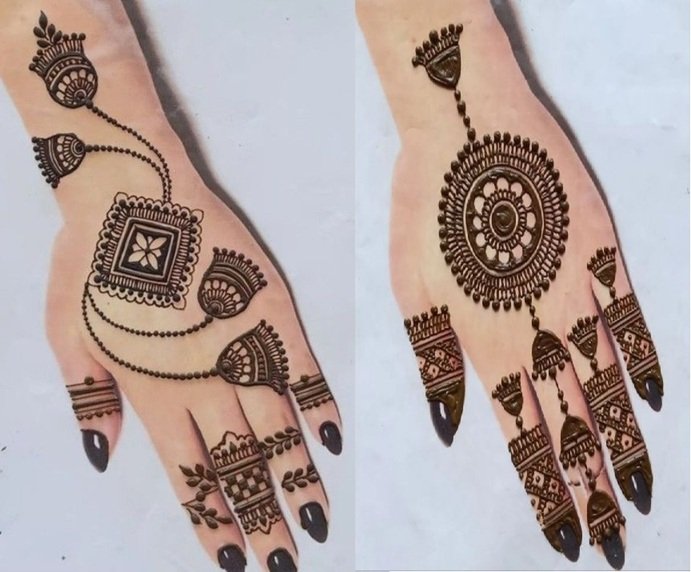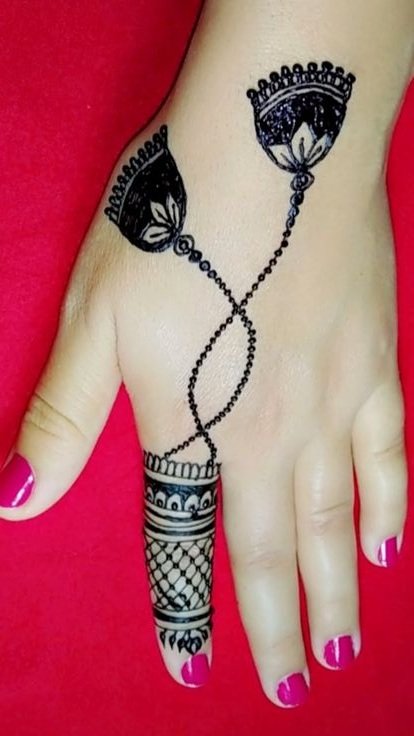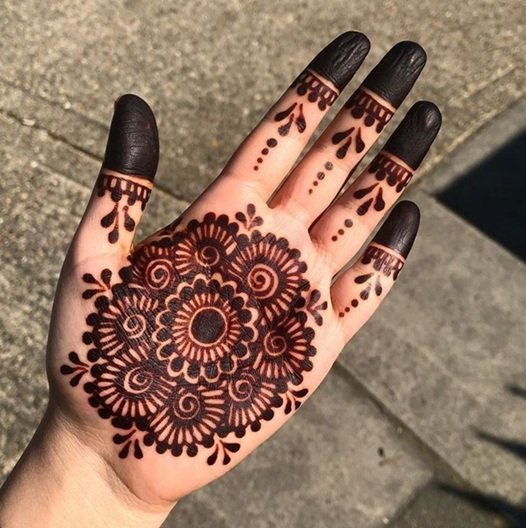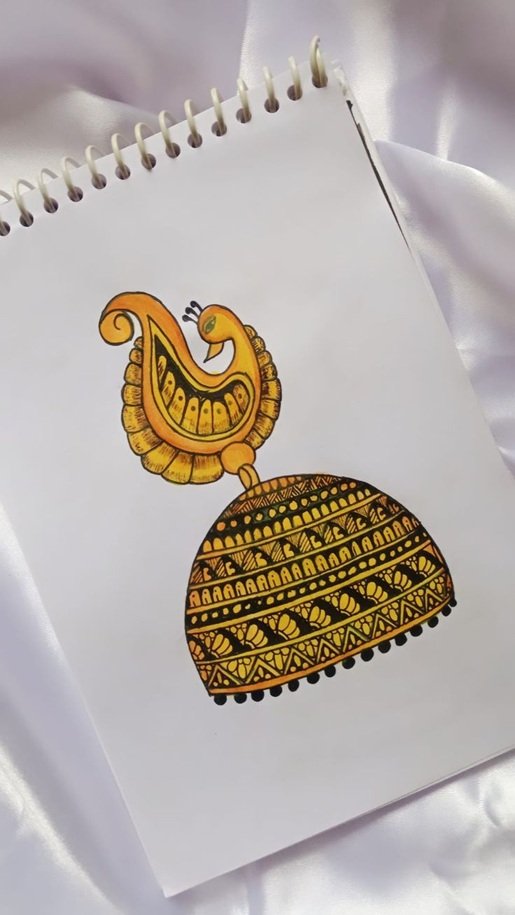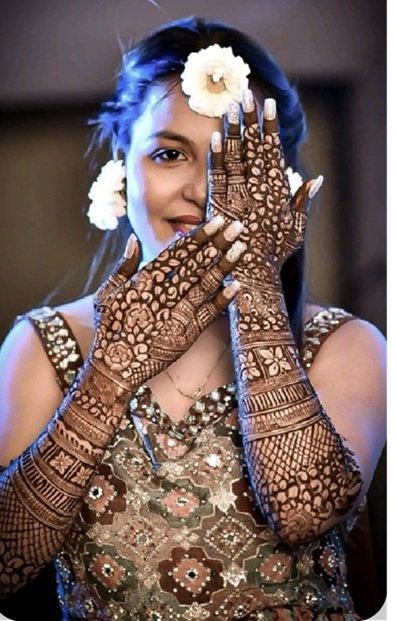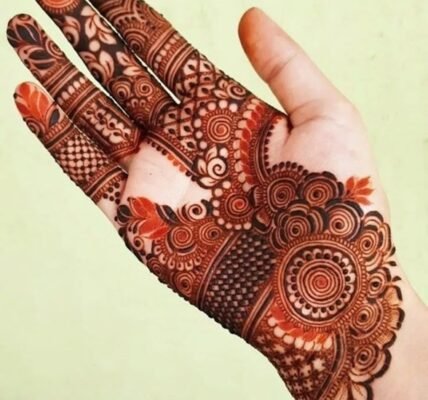Jhumka Mehndi Design – Latest Trends, Ideas, and Meaning Behind the Popular Ornament-Inspired Mehndi Art
In the vibrant international world of Indian body art work, mehndi (henna) designs have always held a unique place. With a deep connection to traditions, celebrations, and women’s beauty, mehndi is more than most effective a ornamental detail—it’s a form of creative expression. Among the numerous styles and patterns that have evolved over the years, the Jhumka Mehndi Design has emerged as one of the most trending and liked styles, in particular among brides and young ladies. A best combination of lifestyle and elegance, Jhumka-fashion motifs have turned out to be the highlight of modern-day henna artwork.
Whether it’s for a wedding, pageant, engagement, or perhaps casual application, Jhumka Mehndi Designs are catching the attention of each mehndi lover. But what precisely is this layout? Why is it gaining such popularity? What are the specific styles and styles available? And how are you going to incorporate it into your subsequent mehndi consultation?
Let us explore all this and more in detail.
What Is a Jhumka Mehndi Design?
Understanding the Symbolism and Meaning Behind Jhumka in Mehndi Art
The word “Jhumka” refers to a conventional Indian dangling earring recognised for its bell shape and intricate detailing. Jhumkas have been a part of Indian rings for masses of years and are mainly popular among brides. These jewelry represent grace, elegance, and femininity—that is why they are so regularly used as a image in specific artwork office work, which incorporates mehndi.
A Jhumka Mehndi Design is a innovative form of henna art work in which the form and aesthetic of a jhumka are recreated the use of henna on the fingers or toes. These designs aren’t just literal representations of rings—they may be frequently stylized to encompass dangling chains, floral tops, leaf motifs, beads, and first rate lace-like patterns that resemble the beauty of actual jewelry.
Unlike conventional floral or paisley mehndi, Jhumka mehndi brings a touch of 3-D illusion and depth that makes it appear like actual ornamentation drawn right now on the pores and skin.
Why Jhumka Mehndi Designs Are Becoming So Popular
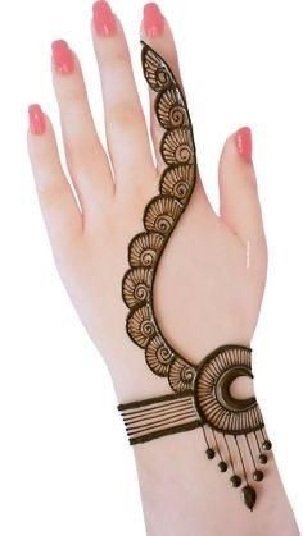
Over the beyond few years, the popularity of Jhumka-stimulated henna designs has grown unexpectedly. Here’s why these designs are cherished with the aid of each mehndi artist and clients:
- Unique and Eye-Catching: Traditional mehndi designs are often filled with repetitive floral or leafy motifs. Jhumka designs, as an alternative, deliver a smooth, ambitious, and standout attraction.
- Perfect for Bridal Looks: Brides love along with jewelry motifs to their mehndi to mirror the richness of the event. Jhumka designs make the hand appearance decorated, even without wearing actual earrings.
- Can Be Mixed with Other Elements: You can integrate Jhumkas with specific styles like mandalas, paisleys, peacocks, or Arabic swirls to create greater complex and layered designs.
- Works on Both Hands and Feet: The bell shape fits fantastically on the lower back of the hand, fingers, wrist, or toes, giving flexibility to the artist.
- Social Media Trend: Platforms like Instagram, Pinterest, and YouTube have seen lots of shares of Jhumka Mehndi Designs, encouraging even greater people to attempt it out.
Types of Jhumka Mehndi Designs You Must Try
1. Traditional Jhumka Design with Floral Base
This is one of the most conventional kinds of Jhumka design. It functions as a semi-spherical bell hanging from a floral or leafy pinnacle, similar to an actual earring. Artists regularly encompass dotted chains or swirls placed from the bell to imitate the ghungroo (bells) of the actual ornament. This fashion is perfect for bridesmaids or ladies attending their family’s skills.
2. Minimal Jhumka Finger Design
This fashion is diffused and relatively modern-day. Here, a small Jhumka motif is drawn on one or two fingers, generally the index or centre finger. The relaxation of the hand is left, both bare and covered in slight vines and dots. It offers a smooth, modern-day, and minimalist look ideal for informal events or women who don’t need complete-hand mehndi.
3. Arabic Jhumka Mehndi Pattern
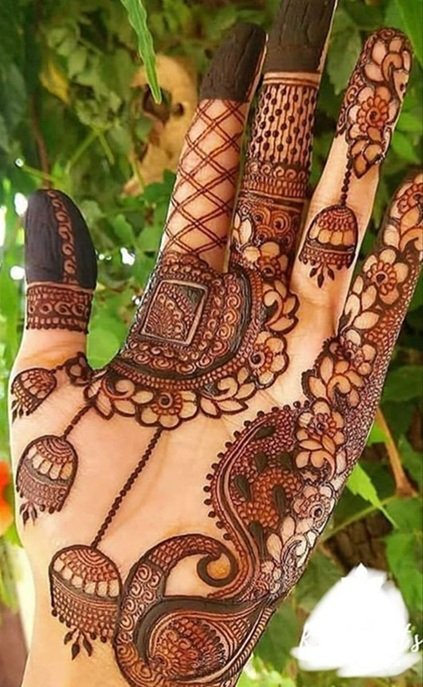
The Arabic Mehndi fashion is characterised by formidable lines, empty spaces, and unique curves. When blended with a Jhumka motif, it creates an attractive fusion design. The Jhumka is drawn diagonally, regularly from one corner of the palm to the wrist, with leafy branches and florals wrapping around. The area across the Jhumka makes it extra outstanding and dramatic.
4. Bridal Full-Hand Jhumka Design
For weddings, complete-hand mehndi is the maximum cherished. In this model, multiple Jhumkas are drawn for the duration of the palm, once more of the hand, or even arms, combined with different wealthy patterns like mandalas, dulhan (bride) faces, and traditional factors. Each Jhumka may additionally vary in size and element, making the hand seem like a piece of ornamented material.
5. Mandala with Hanging Jhumka Art
Mandala mehndi designs are religious and geometric. In this sample, a big mandala is drawn in the middle, and a Jhumka layout is drawn starting from one facet, developing the phantasm of a pendant or accessory. This aggregate of round symmetry and putting ornament is both elegant and spiritually significant.
Best Placement Areas for Jhumka Mehndi Design
The splendour of Jhumka mehndi lies in its versatility. It may be drawn in various placements, primarily based on personal preference and the event. Here are the maximum favoured areas:
🔹 Back of the Hand
This is the most famous spot. A fantastically drawn Jhumka looks like real rings on the hand. It also images nicely for Instagram or bridal photographs.
🔹 Fingers
Perfect for minimum designs, a small Jhumka at the top of each finger with skinny chains can look stylish and quiet.
🔹 Wrists
Drawing a Jhumka on the wrist vicinity, with chains extending closer to the hand or elbow, creates a bracelet-like phantasm.
🔹 Palms
For those who need whole coverage, consisting of a massive Jhumka motif in the centre of the palm works high-quality. This appears brilliant with conventional outfits.
🔹 Feet and Ankles
Jhumka designs close to the ankle or the sides of the feet make the toes look embellished even without earrings. They are well-known for brides who want a whole appearance from head to toe.
How to Create a Perfect Jhumka Mehndi Design
Creating this layout is a clever system and requires creativity and patience. If you are an amateur or a mehndi artist looking to increase your portfolio, here’s the way to do it:
Step-by-Step Approach:
- Start with the base – Draw a small circle or flower, so one can be the element the Jhumka hangs from.
- Draw the bell shape – Create a semi-circle or dome, barely curved with layered styles to mimic steel work.
- Add detailing – Use dots, traces, lace styles, and scallops to feature depth and richness to the Jhumka.
- Draw chains or tassels – These need to hang close to the lowest part of the bell. You can upload beads or small pieces of floral designs.
- Combine with surrounding motifs – Add vines, paisleys, or Arabic lines to border the layout properly.
For an extra professional look, make certain the strains are sharp, the bell is symmetrical, and the info is clean and steady.
Best Occasions to Wear Jhumka Mehndi Designs
You can put on Jhumka Mehndi Designs for many unique activities. Here are some best ones:
- Weddings: Brides, bridesmaids, and near family often choose this layout for pre-marriage ceremony occasions like mehndi and sangeet.
- Festivals: Rakhi, Diwali, Eid, and Karwa Chauth are extremely good fairs for this layout.
- Engagements: For a mild, however stylish mehndi, minimum Jhumka artwork on arms seems exceptional.
- Photoshoots: Many style models use these designs for bridal or ethnic photoshoots.
- College/School Events: Even more youthful women love trying this present-day style for cultural skills.
Tips to Make Jhumka Mehndi Last Longer
Once applied, you need your Mehdi to ultimate long and stay wealthy in colour. Here are some tips to study:
- Let it dry clearly for at least 6–8 hours
- Avoid washing the location with cleaning soap and water for twenty-four hours
- Apply a mixture of lemon and sugar as quickly as the Mehdi begins drying
- Heat cloves in a pan and take the steam in your fingers (without burning) to enhance colour
- Use Vicks or any balm in a dry format before going to bed to deepen the stain
Final Thoughts on the Beauty of Jhumka Mehndi Design
Jhumka Mehndi Design is a shining example of ways traditional Indian adorns can inspire modern henna art. It’s greater than only a style—it’s a birthday celebration of femininity, subculture, and creativity. With a substantial sort of styles and placements, it offers some component for every event and each persona.
